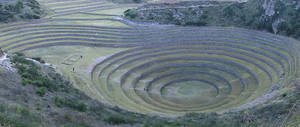Agricultural Heritage: A Legacy for the Future

The concept of Globally Important Agricultural Heritage Systems (GIAHS) is distinct from, and more complex than, a conventional heritage site or protected area/landscape. A GIAHS is a living, evolving system of human communities in an intricate relationship with their territory, cultural or agricultural landscape or biophysical and wider social environment.
The humans and their livelihood activities have continually adapted to the potentials and constraints of the environment and also shaped the landscape and the biological environment to different degrees. This has led to an accumulation of experience over generations, an increasing range and depth of their knowledge systems and generally, but not necessarily, a complex and diverse range of livelihood activities, often closely integrated.
The resilience of many GIAHS sites has been developed and adapted to cope with climatic variability and change, i.e. natural hazards, new technologies and changing social and political situations, so as to ensure food and livelihood security and alleviate risk. Dynamic conservation strategies and processes allow maintaining biodiversity and essential ecosystem services thanks to continuous innovation, transfer between generations and exchange with other communities and ecosystems. The wealth and breadth of accumulated knowledge and experience in the management and use of resources is a globally significant treasure that needs to be promoted and conserved and, at the same time, allowed to evolve.


